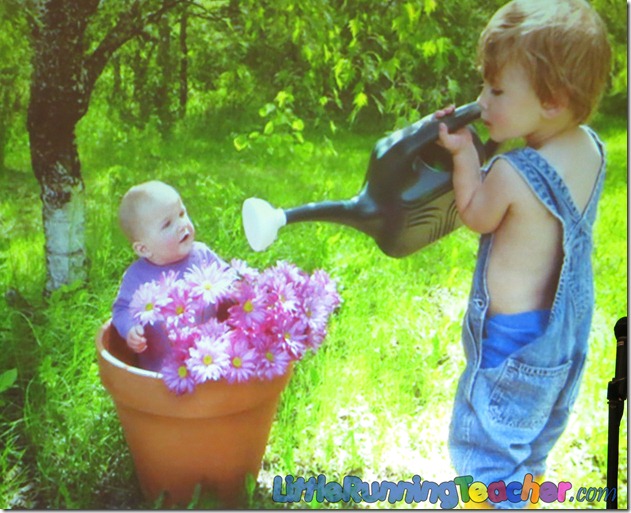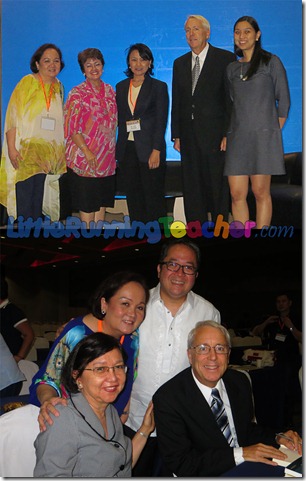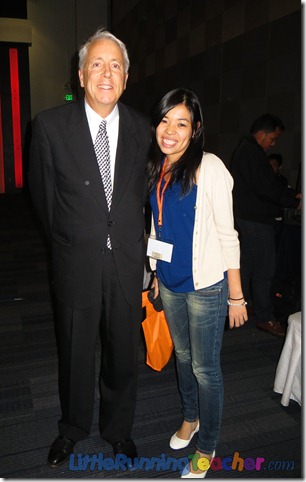The Superkids Conference is an interactive Conference and Exhibition on Early Childhood Education for teachers and parents alike. It takes place once a year and has been happening since 2010 if I remember correctly. Every year, the Superkids Conference just keeps getting bigger and better. I’m so glad I got to be part of it this year!
The main speaker this year was Dr. Thomas Armstrong – an author, speaker and educational consultant based in California, USA. Dr. Armstrong discussed topics on the “Exemplars of Best Schools (Early Childhood to High School),” “The Power of Neurodiversity,” and “Multiple Intelligences in the Classroom.” The latter 2 were topics close to my heart.
As a preschool teacher, I have a deep understanding and appreciation of every child’s uniqueness and individuality. Ever since I learned about the 8 Multiple Intelligences of Howard Garner back in college, I just couldn’t stop talking about. I always use it as my reference whenever talking about the behavior, attitude or skills of a child. I really dislike it when people label a child for their weaknesses or immediately say a child has ADD or ADHD simply because he can’t sit still in the classroom – this is not a basis! Children will be children, as teachers, it is our responsibility to teach them in the way they would learn. After all, if they don’t learn then it means we didn’t teach.
My favorite part of Dr. Armstrong’s talk was when he started talking about the multiple intelligences and neurodiversity. He delivered his message really well that I doubt anyone in the room did not understand it. I’ve shared a little about MULTIPLE INTELLIGENCES on a previous article. Check it out by clicking HERE.
For this article, I want to focus more on Dr. Armstrong’s view of Neurodiversity.
A Society of Flowers
He started off the session by telling a story about flowers. Imagine if you will that our society is like a bunch of flowers. The rose is the psychiatrist, and outside his office are a row of flowers that have come to see him. The first one to come in was the sunflower. After assessing it for half an hour, the psychiatrist says: “You suffer from HUGISM.” The sunflower though beautiful as it is, leaves the doctor’s room with it’s head down low. Next is a tiny bluet. After a few tests, the psychiatrist then says, “Sorry but you have GD, a growing disability. Don’t worry though because we can give you appropriate treatment.” The bluet leaves feeling even smaller than when it first came in. Finally, a calla lily enters the room and in less than five minutes, the psychiatrist says, “You have PDD, or petal deficit disorder. This can be controlled but not cured with a specifically designed formula.”
Ridiculous don’t you think? Well, guess what, we can be exactly that way toward our students, other children and even friends sometimes. We are quick to judge based on what we think and feel are normal that we completely ignore the beauty these people have. “Instead of celebrating the natural diversity inherent in human brains, too often we medicalize and pathologize those differences by saying – Johnny has autism. Susie has a learning disability. Pete suffers from attention deficit hyperactivity disorder.”
We come from a world that values biodiversity (different life forms) and cultural diversity (variety of culture) but why not neurodiversity (different way of thinking). Someone who thinks differently need not be labeled as disabled. Is it not possible that he just thinks uniquely? Since when has there been a basis as to what is normal and what is not?
In his talk, Dr. Armstrong shares the 8 principles of neurodiversity. It would be awesome if you guys could grab a book as all the information you need about these principles are there. However, let me give you one of the principles that struck me the most.
Neurodiversity Principle #8: Strength Awareness
We often label a child based on his disability. We focus on what is missing and what’s not there. Why not focus on the positive instead? Why not focus on the ability? Dr. Armstrong shared some examples.
- Children with ADD or ADHD
A child who can’t sit still and is fidgety in class is often labeled as having ADD or ADHD. For one, it may be possible that he simply excels more in his bodily-kinesthetic intelligence as I’ve mentioned on my previous post on MI. He wants to learn but we don’t give him a chance to learn in his own way. Well, let’s assume that he DOES have ADHD, instead of labeling him for his weakness; why not label him for his strengths? Did you know that people with ADHD are very much aware of their surroundings? As Dr. Armstrong said, they are hunters in a world of farmers. Farmers are calm and plant rice all day; hunters are always on the go. Chasing animals and being very keen to every small sound they hear while out in the wilderness. Someone with ADHD can grow up to be a businessman who needs to go from one meeting to another or even fly across countries one day after another. A “normal” person would find this excruciatingly tiresome.
- Children with Autism
A child with autism is often labeled as such because of his routines and lack of social skills. However, these kids are also the once who do best in troubleshooting. In fact, a company in Denmark has around 80% of employees with autism because they are able to detect the problems faster and better than the regular employees.
- Children with Dyslexia
What about people with Dyslexia? Having dyslexia means a person has difficulty reading or seeing letters because he sees it differently. However, did you know that people with dyslexia excel in their picture or spatial intelligence? One example Dr. Armstrong gave was of a kid who drew a car from a bird’s eye view. People with dyslexia see all angles of an object and are able to draw things from a variety of views. This is one characteristic of an architect.
There are SO MANY MORE examples on how we can view a person positively and help him focus on his strengths. What’s wrong with the world today is we try to fix people as if they were objects. We try to fix what’s missing instead of improving what’s there. It’s like trying to turn a bed into a car. Instead of using the bed to sleep and relax, we find what’s missing and change it. We do the same with people. Dr. Armstrong shared a story of this 5 year old girl who could sketch people like a famous artist could. However, this girl suffered from a learning disability and underwent several therapy sessions to fix what she lacks. By the end of the sessions, she had improved her social skills and others, but her drawing was now similar to that of any other 5 year old.
Sketch by a 5 year old girl
We are a world of special and unique beings created by Christ. He created each of us different from the other and no two are alike. So why force those whom we feel are too different from us to be like us? Maybe it’s about time we learned a lesson from them.
Before ending this post, let me share the story of Gillian Lynne. This was not mentioned in the seminar, but I’d like to share it anyway.
“As a child Gillian Lynne was considered difficult, lacking focus, restless, and a child who underperformed at school. Her teachers encouraged her mother to take her to the doctor. This was in the 1930′s and ADHD was unknown. The doctor observed Gillian and later asked to speak privately to her mother. While he did that, he turned on the radio in the room Gillian was in. She became a different person and just danced away. She was free and comfortable with who she was. The doctor told Gillian’s mom that her daughter was not sick, she was a dancer! Harnessing her skills, Gillian went to dance school. Here, she found others like herself who needed to move in order to think. Gillian later became a famous dancer, beginning her career at age 16 dancing in Swan Lake. She is also the choreographer for Cats and Phantom of the Opera. She was able to live to her potential and realize her dreams because she was given the permission to live from the inside out. What would have happened had the doctor chose to medicate her?”
This summary taken from http://www.peakexperienceparenting.com
with the speakers of Superkids 2012 (L- R) Ms. Maricar de Ocampo, Ms. Francisca Lacanilao, Ms. Didi Manahan, Dr. Thomas Armstrong, Ms. Ani Rosa Almario and with Dr. Francis Dimalanta and Dr. Teresa Gustilo-Vilasor below
–
So take some time off and reflect. How have you been treating your child or your students? What strength do they have and how can you help them learn more? Leave a comment and share your thoughts.
P.S. Grab a copy of Dr. Armstrong’s book on Neurodiversity on Amazon.com














